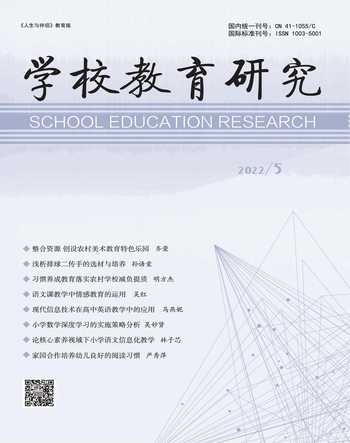A Phenomenological Study of The Role Stress Different Between Male and Female University Music Teachers in Their Professional Life
ZhengWang


Introduction
Previous studies identified sources of stress among music teachers and provided suggestions. However, studies focusing on the stress of university music teachers are lacking. It’s worthwhile to understand the stressful situations and the differences between male and female university music teachers. In this study, the author delved into the life of four university music educators, identified their sources of stress, and presented some solutions.
Role Stress
Role stress as described by Kahn et al. (1964) identified Six role stressors as well as psychological and professional variables: role conflict, role ambiguity, role overload, underutilization of skills, resource inadequacy, and nonparticipation.
Differences between the male and female music teachers
Fitzpatrick (2013) speculated that lack of female role models and a historically masculine culture may explain the lack of female band directors. Jorgensen (2003) shows that prevailing ideas and practices of music
education have been designed by and for men.
Solution
To relieve the stress, national policies, societies, and schools should provide the support and spiritual attention. Teachers themselves need to maintain a positive attitude (Tang 2019).
Theoretical framework
This study focuses on the stress of university music teachers. The theoretical framework is based on the role stress theory. The author try to determine how the role tress factors impact university music teachers and identify the difference between male and female teachers. This study examines four role stressors: role conflict, role overload, underutilization of skills, resource inadequacy (Figure 1).
Results
Role conflict
Participant 1 (P1), Lily is 48 years old and has been working for 29 years. She is very ambitious:"I have been focusing on my career since I started working." Participant 2 (P2), Lulu is 40 years old. She has been a piano accompaniment teacher for 18 years. She and her husband don’t have Children, so her family didn’t exert a burden on her. Participant 3 (P3), Mercy is 36 and worked at the postdoctoral station for five years. "For me, the role conflict is related to a subject that I am not good at."Participant 4 (P4), Judy is 35 years old. She is the band director and an administrative assistan. "I don't think I can deal with family relationships well. I do feel that there are conflicts between the roles of work and family. "
Role overload
Lily's workload is very heavy, 32 classes a week. Lulu is the same: “I’m currently responsible for the piano accompaniment of all wind students."Mercy also experiences role overload. Judy has a lot of work. She is responsible for both undergraduates and graduate students. She is currently pregnant with her second child.
Underutilization of skills
Lily has been developing her potential and doesn’t underutilization skills. Lulu is interested in teaching a piano course. Mercy haven’t done the project which he good at.Judy is flute performance major which is not related to her current work.
Resource inadequacy
Lily don’t feel any resource inadequacy. Lulu's university’s piano are old.Mercy hopes the university arranges more teacher training. Judy feels the hardware facilities need to be updated, especially the computers.
Discussion
The influence of role stress on university teachers
The four participants all encounter role stress. Stress is negative, but sometimes has positive aspects. They don’t allow negative emotions to take control.
The difference in the role stress of male and female university teachers
The four participants all stated no gender discrimination; no different career development opportunities between gender. However, the research still clearly shows the differences between gender when they encounter stress.
Firstly, male and female university music teachers have different levels of role stress. Females are responsible for childbearing and take care of the family, while males are not expected to do.
Secondly, male and female university music teachers have different feelings and ways of dealing with role stress. Female participants are more emotional.
Thirdly, Female university music teachers encounter conflicts between family and teacher roles earlier than male.
Solution
This study has a longitudinal and in-depth understanding of the stress of university music teachers in their work and life, which has a good reference value. Universities may set up psychological counseling serving university teachers. In addition, university administrators could consider adding more research projects. For teachers themselves, it is necessary to analyze which factor makes them feel stress, and deal with those stressors specificly.

